Pear Tree House by Glasshouse Projects. A richly detailed extension and renovation, Pear Tree House, demonstrates a seamless transition between old and new, where a structured floating box, adjoined by a sunken garden and rectangular pool, elevate traditional charm to modern sophistication. photography by Art Department Creative.
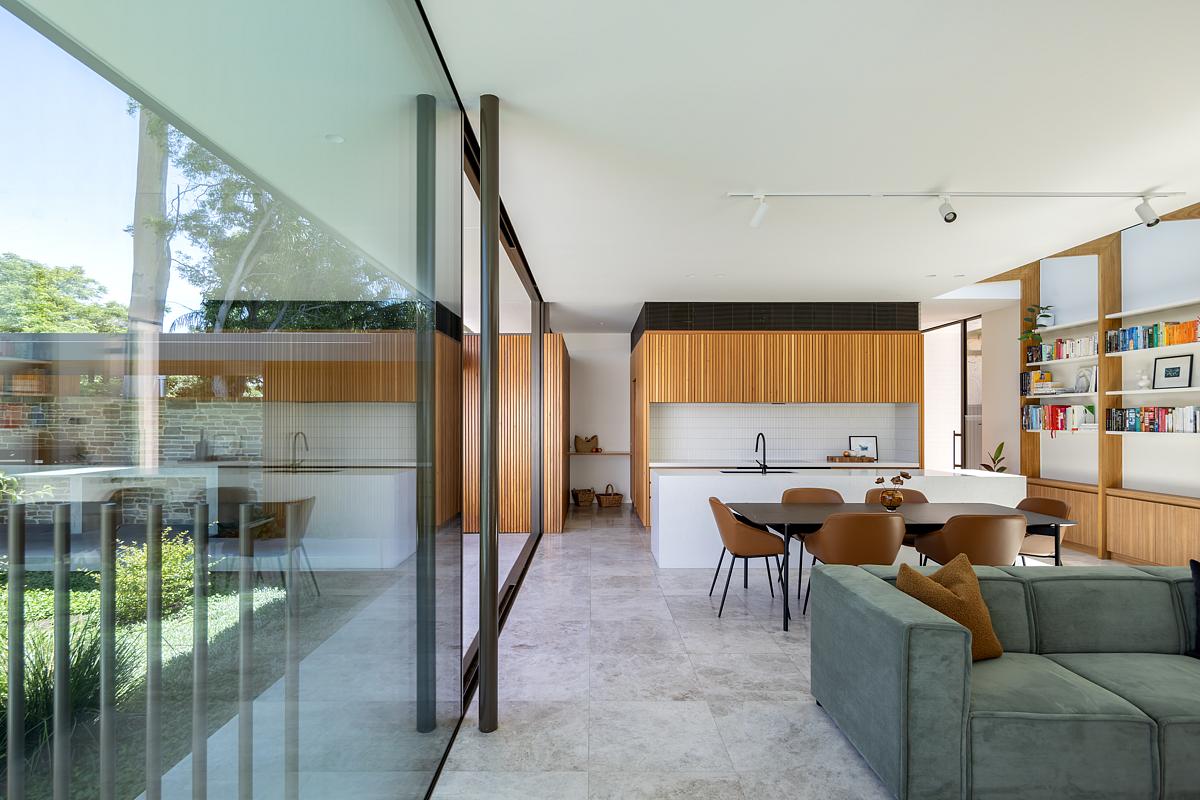
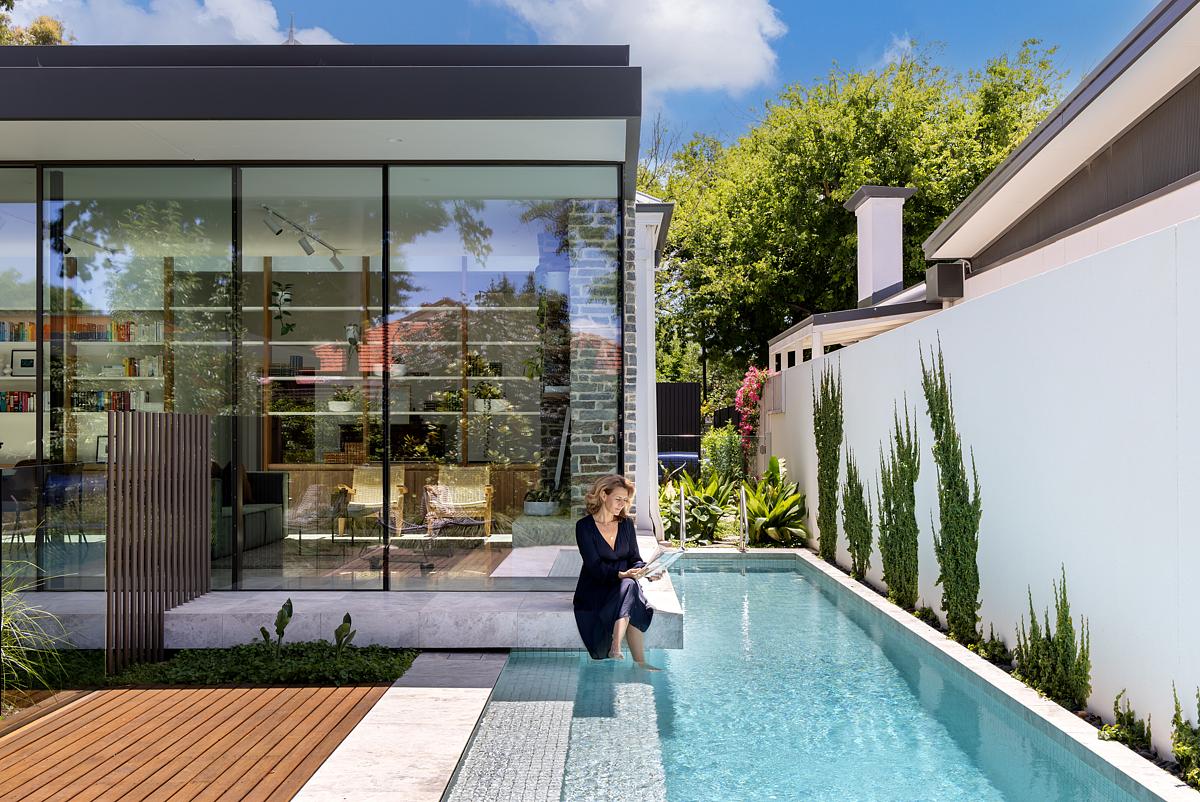
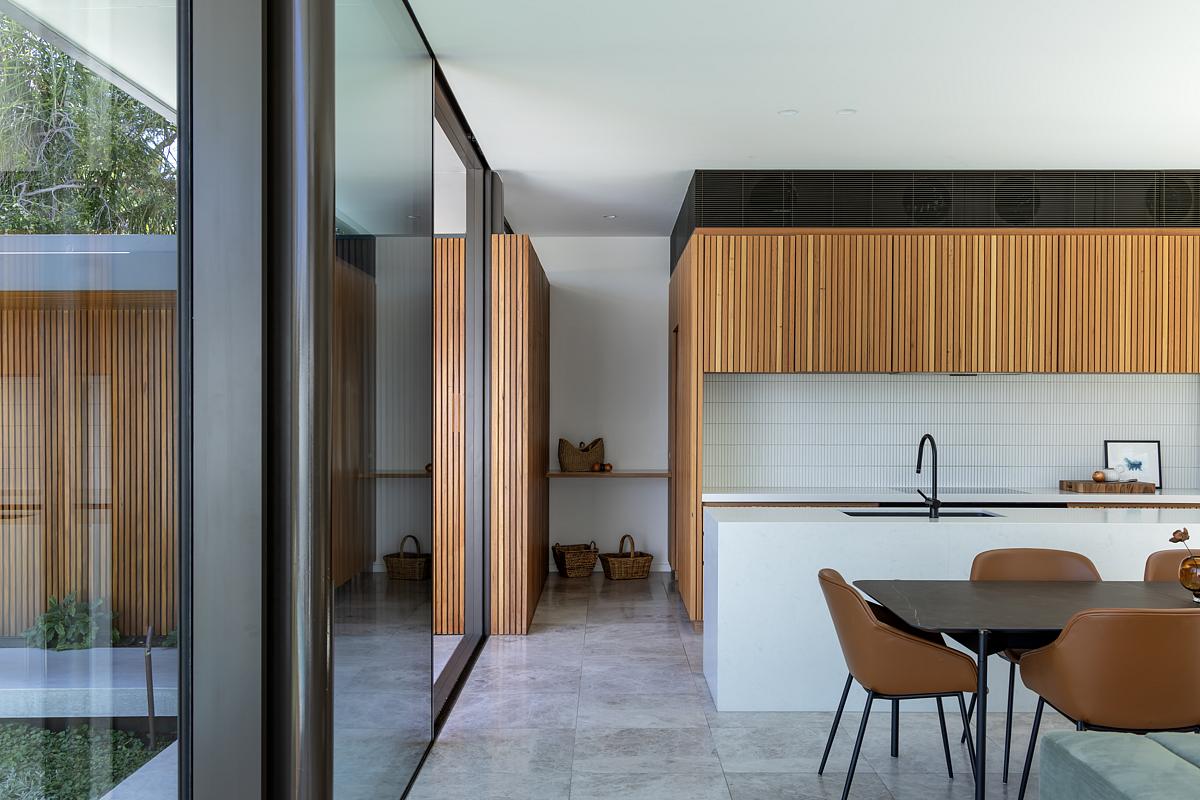
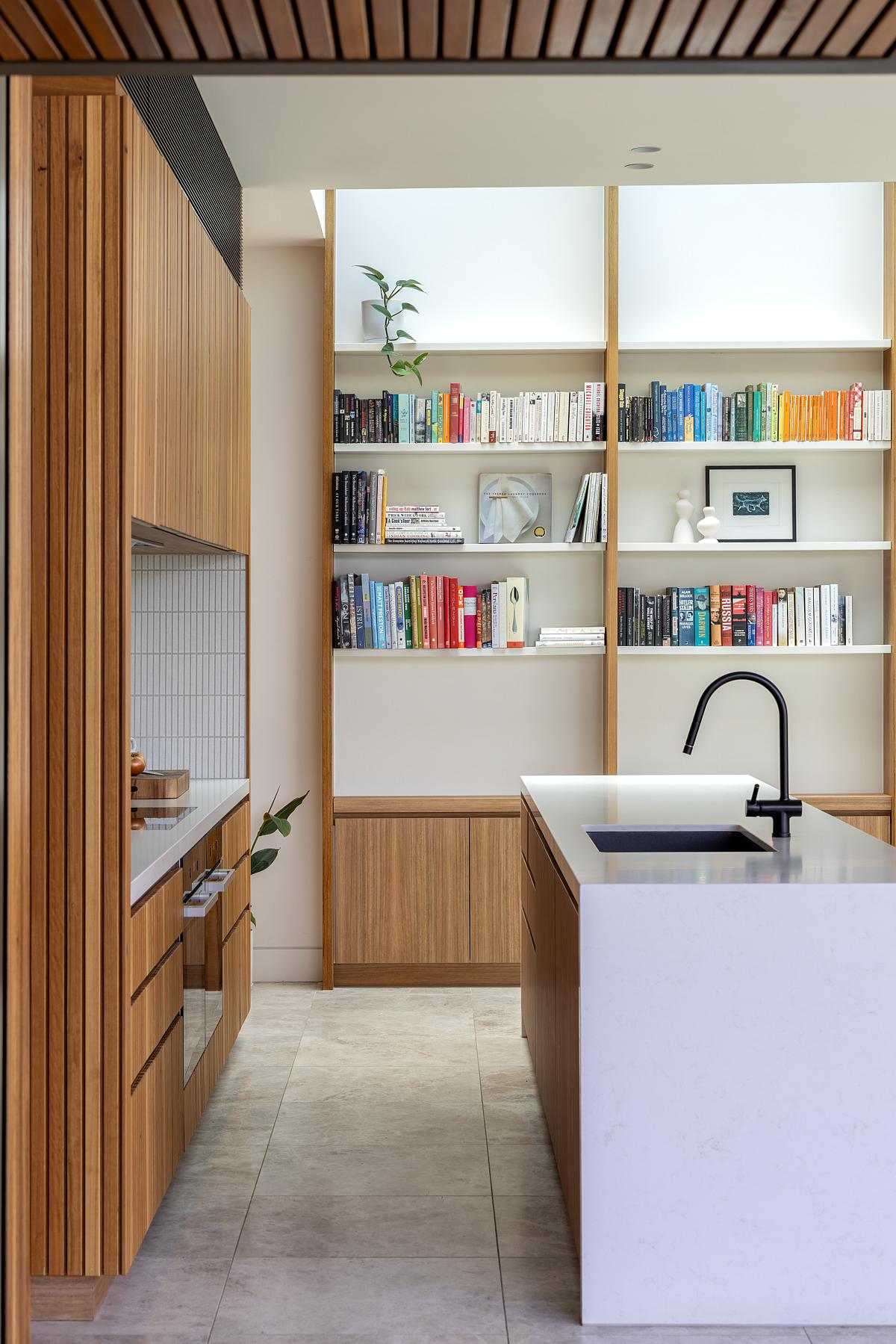
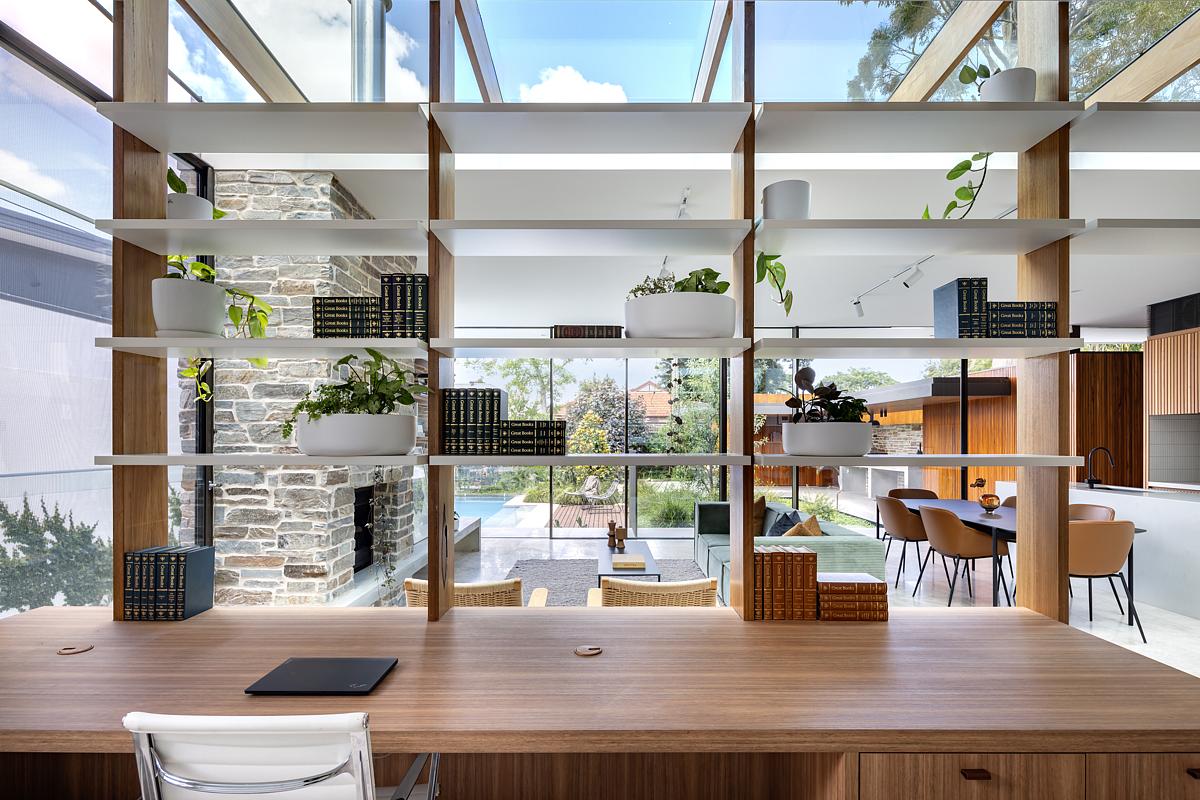
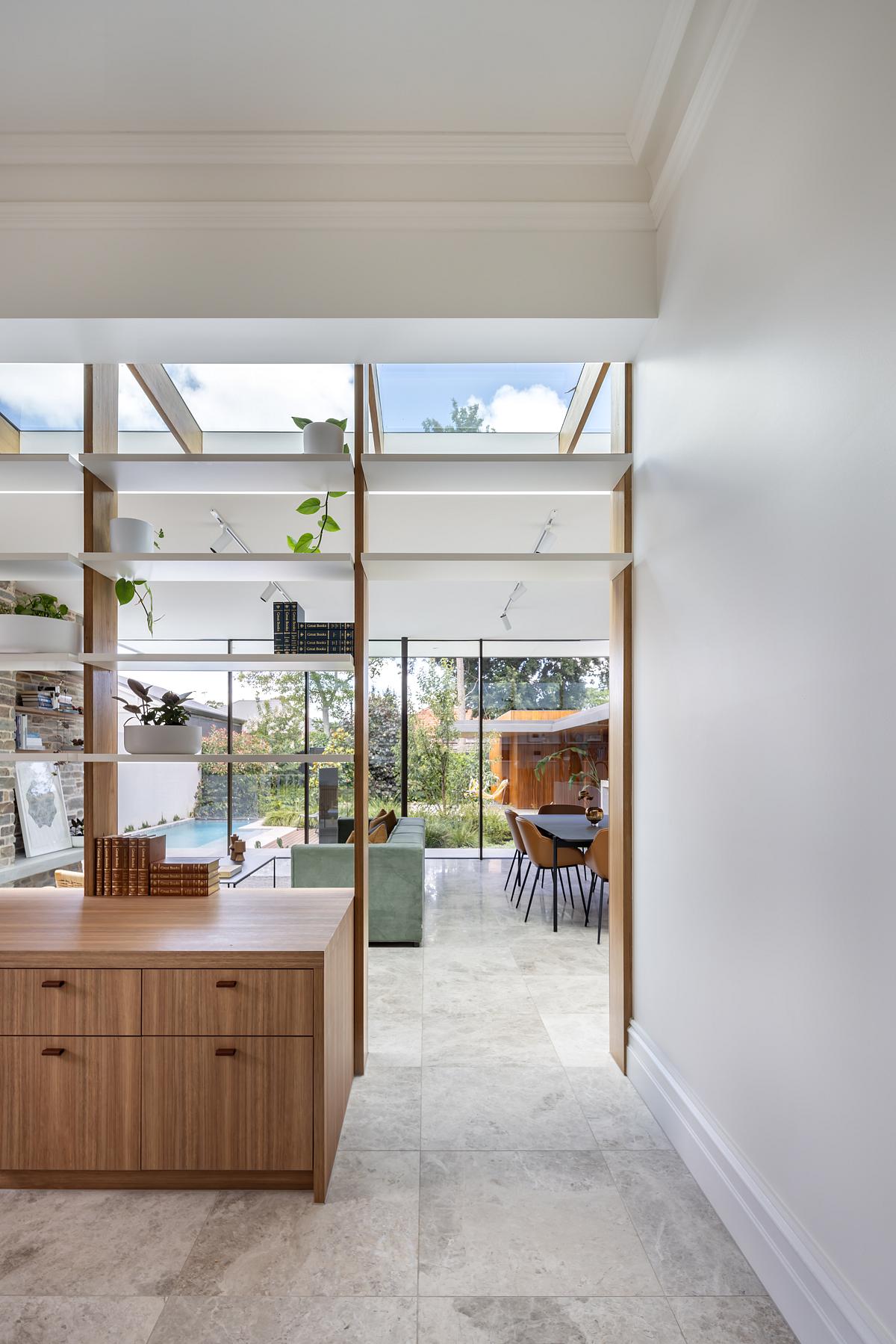


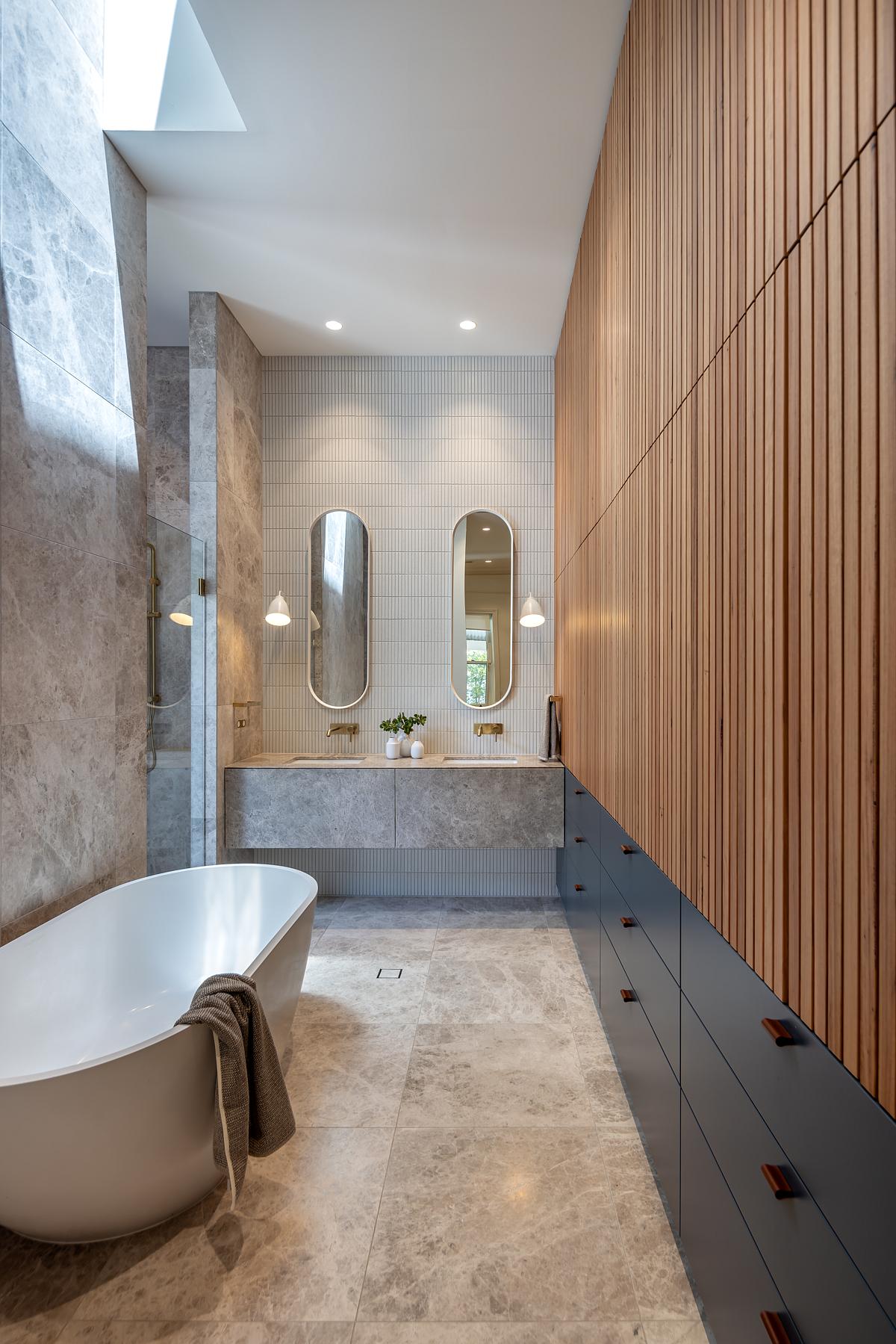
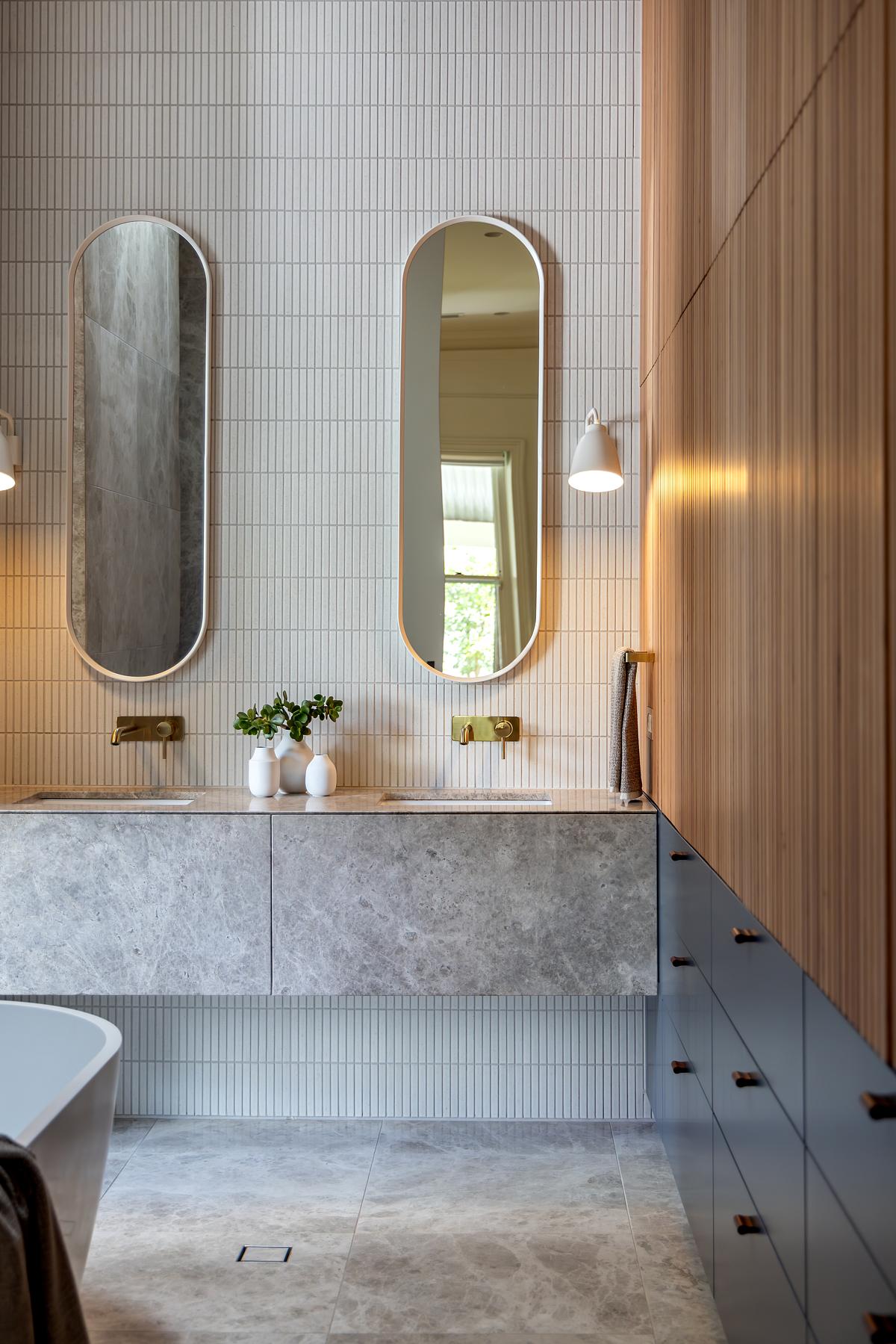
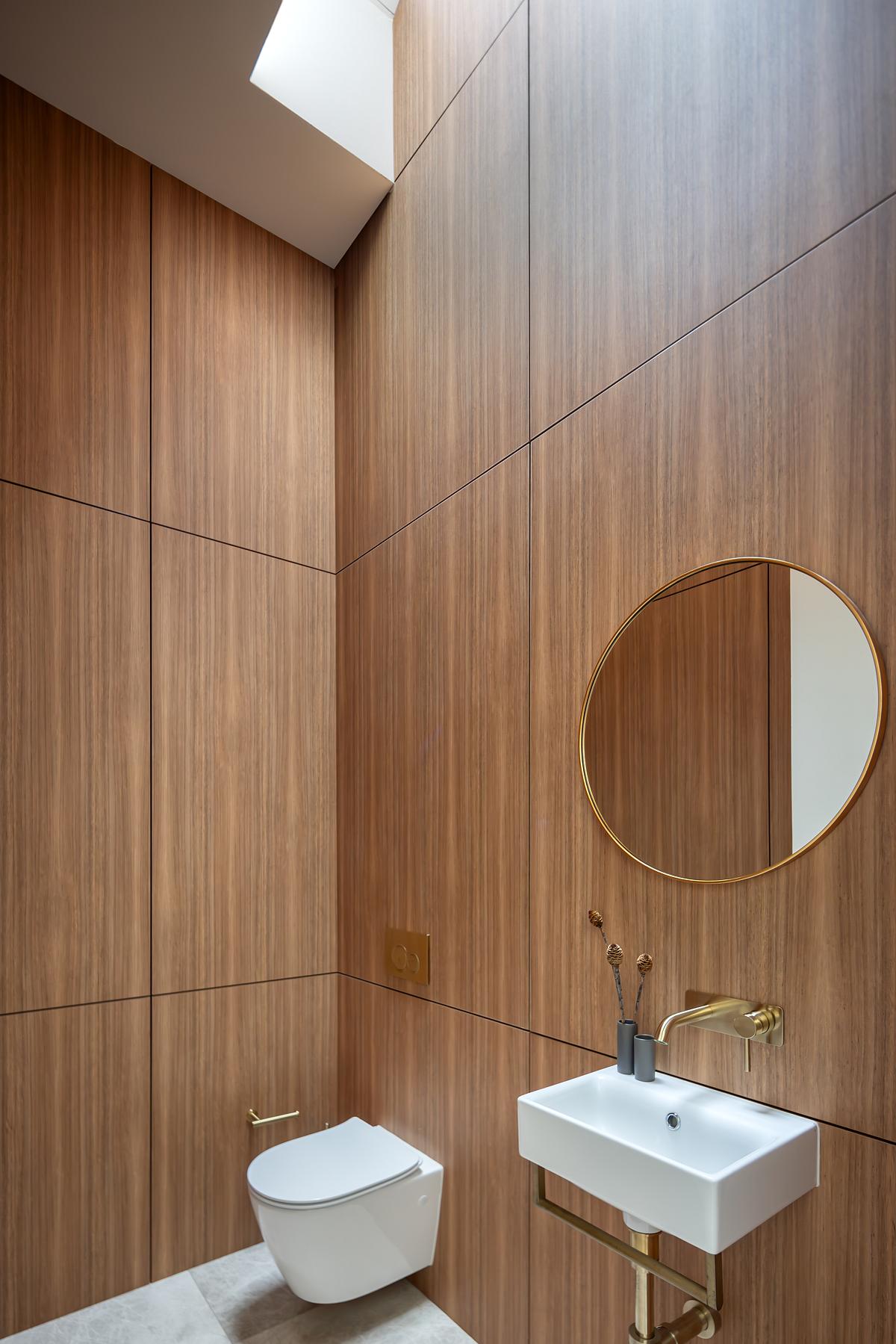
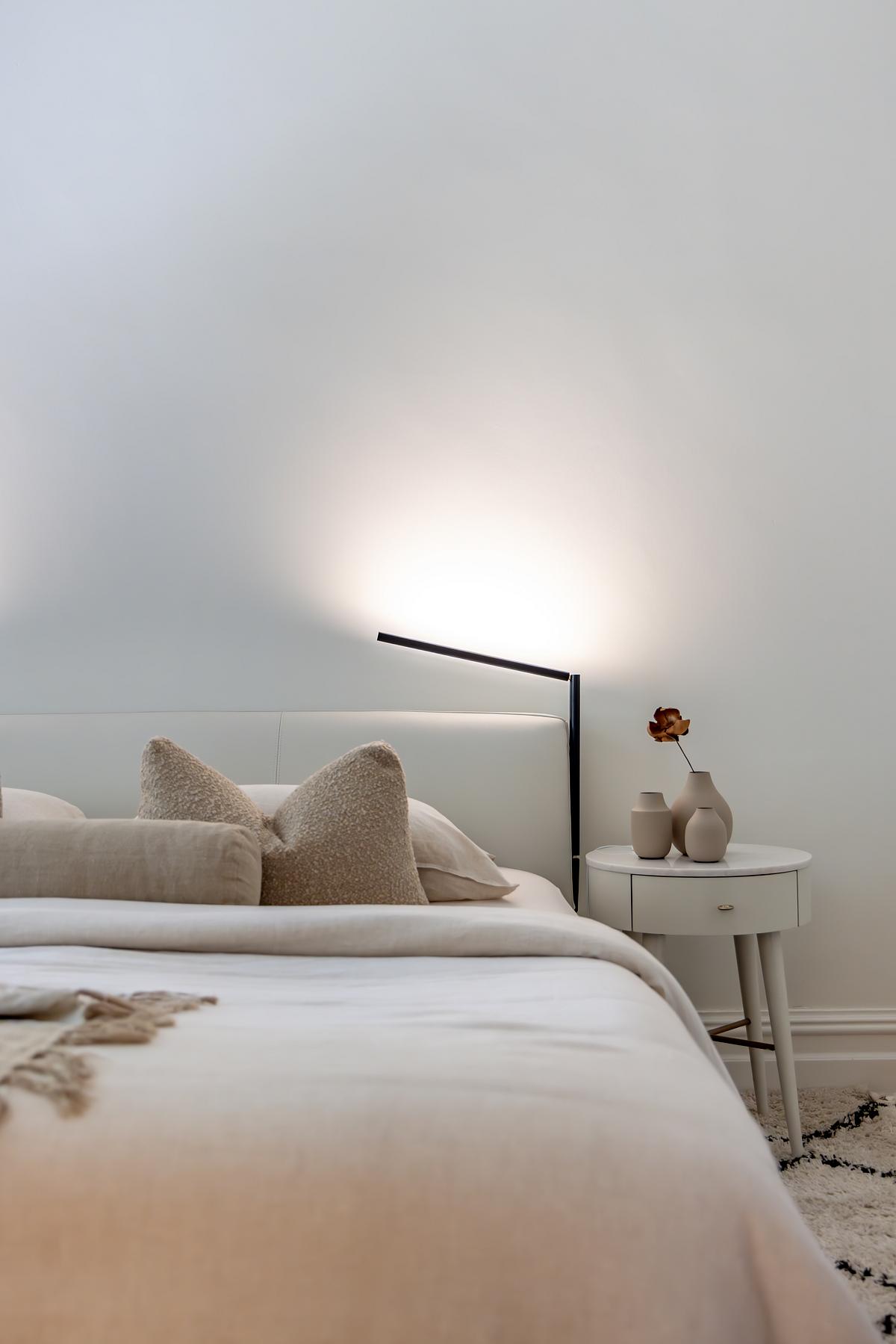
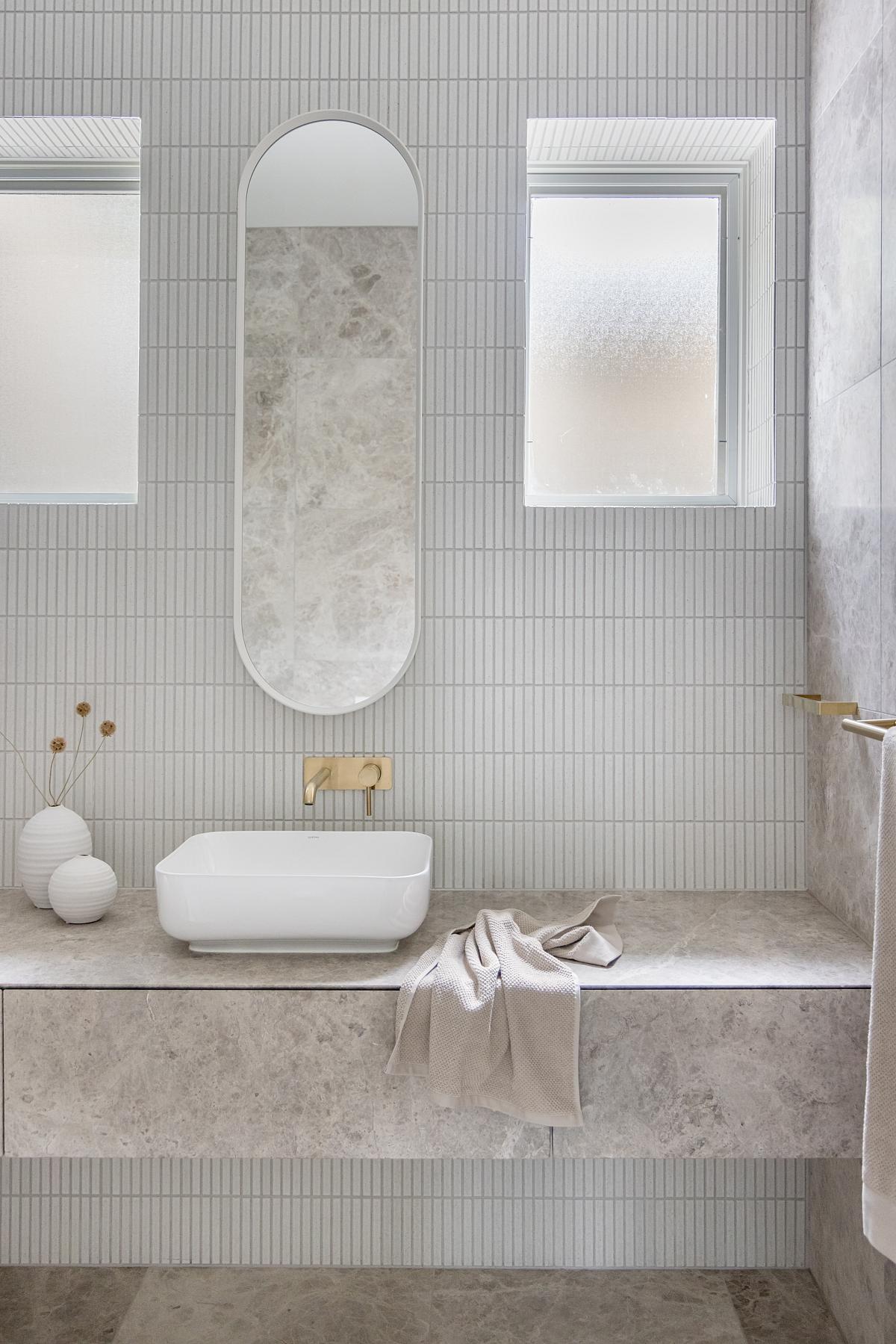
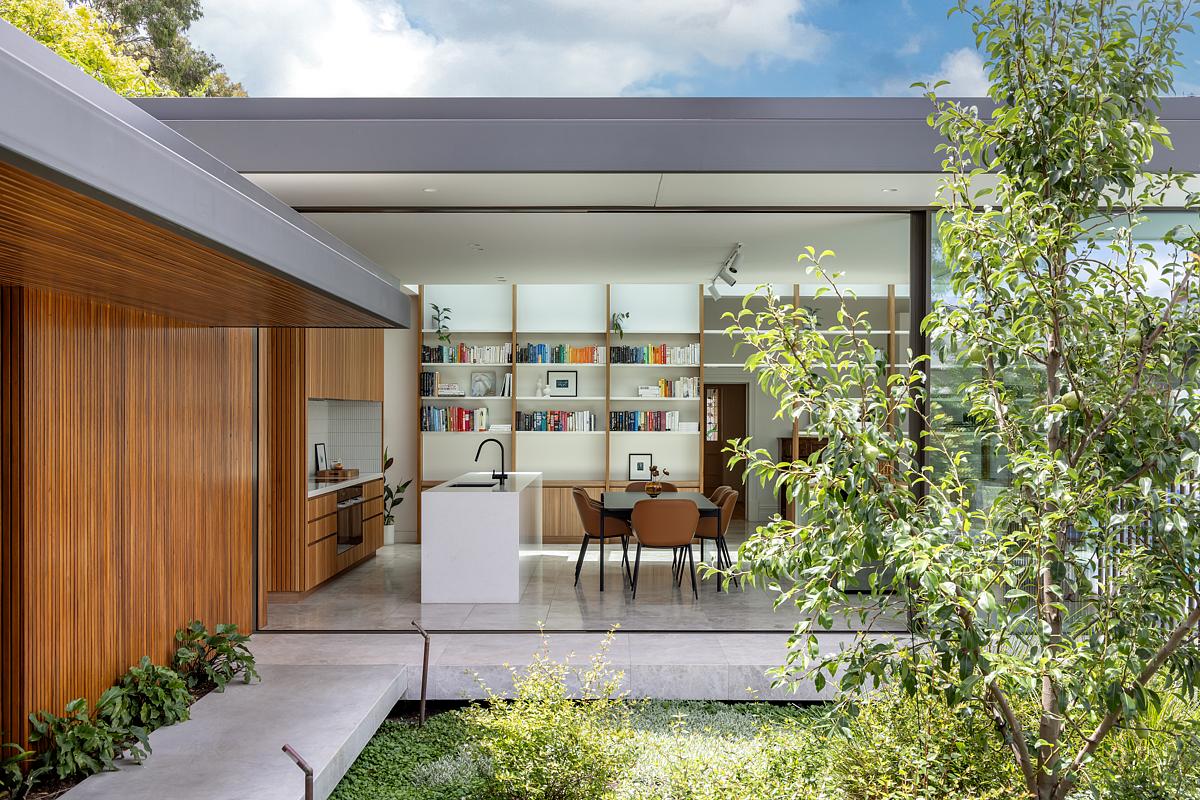
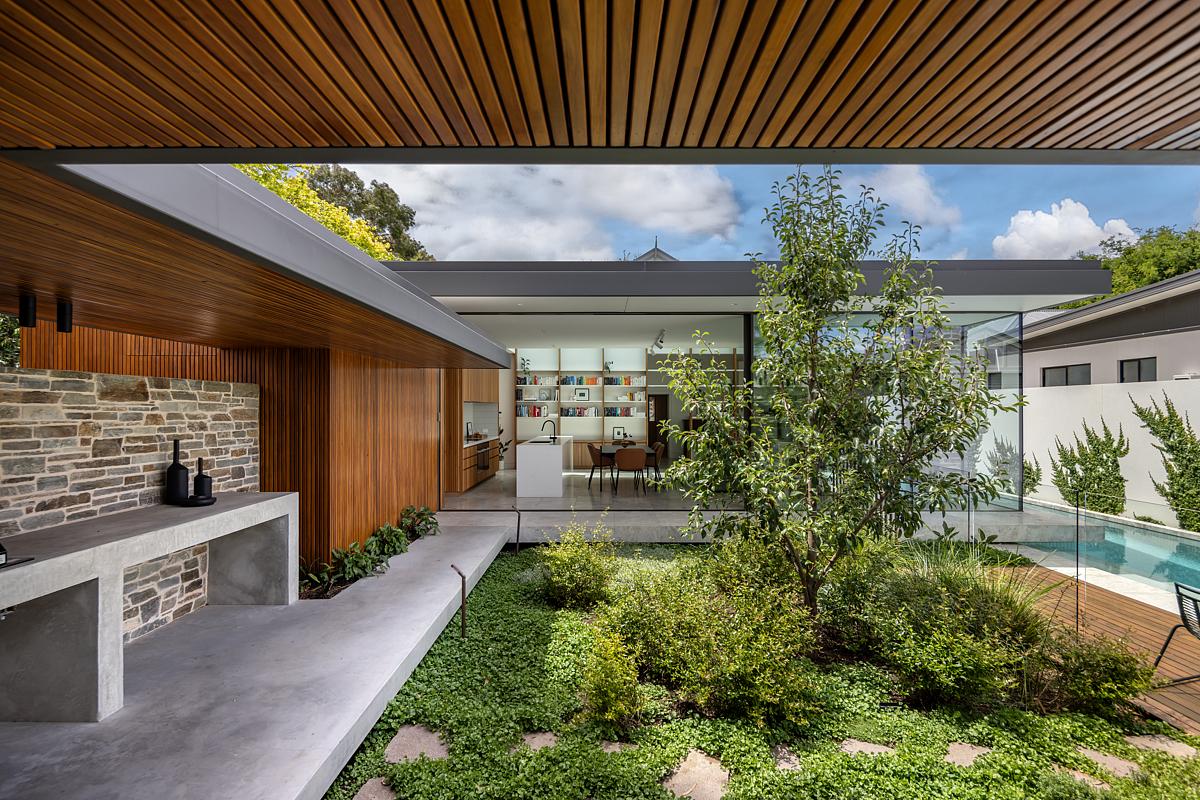


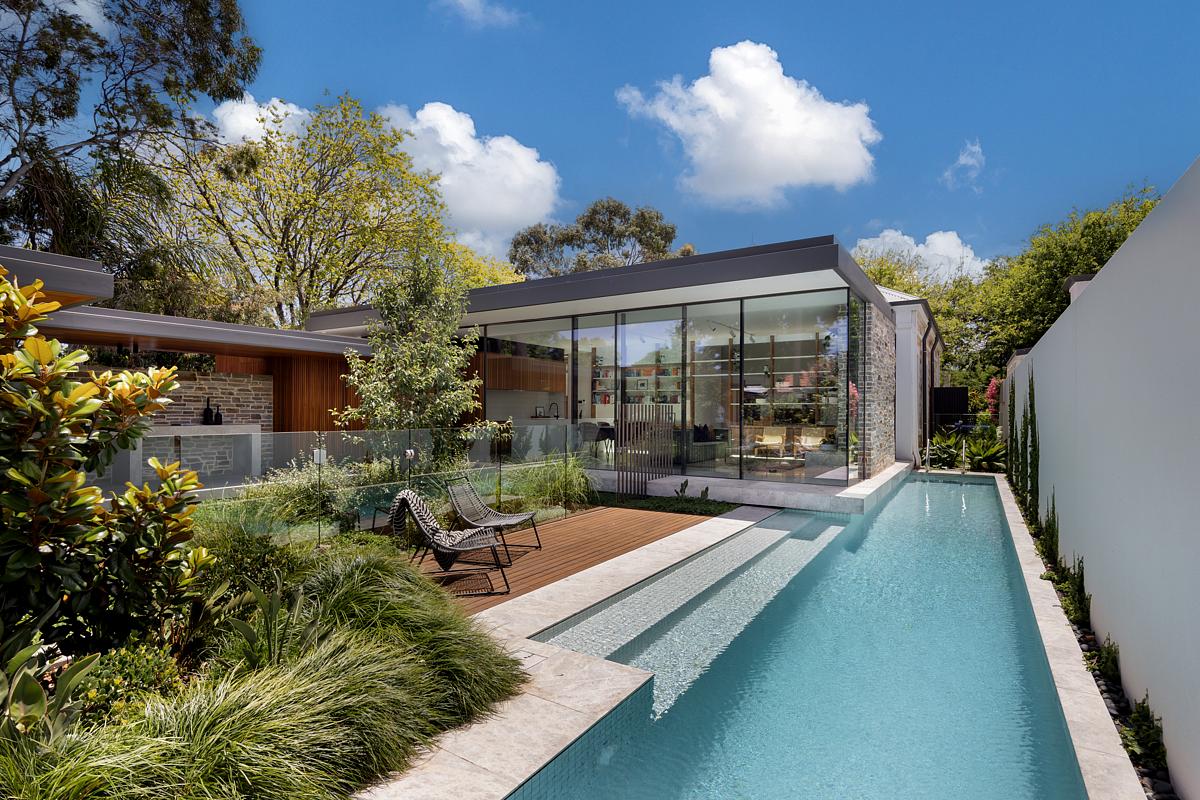

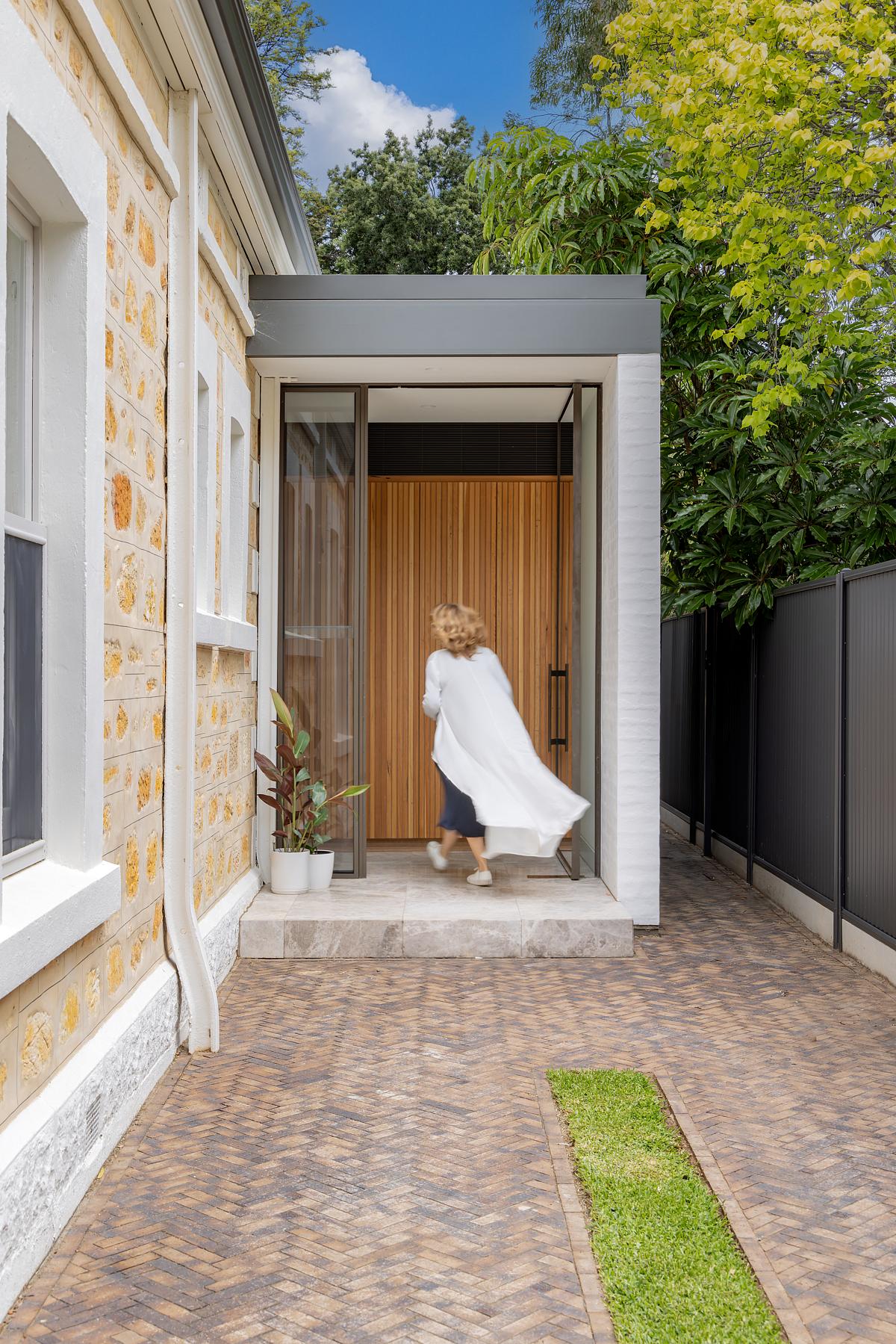


The client’s wishes were to ensure that a modern extension remained sympathetic to the character of the original 1890 sandstone cottage, which sat on a 627 sqm block. Boutique architecture and construction firm Glasshouse Projects, refigured the older back part of the home, creating more areas for private retreat as well as communal spaces for entertaining and socialising. A 300sqm extension, as well as renovation to the older part of the home, resulted in a new master bedroom with ensuite, dining, kitchen, butler’s pantry, laundry, powder room, guest bathroom, study, pool and outdoor living area. Clever design in the use of the rear access, sees the garage being able to be recessed via sliding timber panels and used for greater outdoor entertaining space. The addition of a side entry, complete with parking space, affords greater practicality for unloading shopping, with direct access to the kitchen and living.
The front façade and veranda was retained, it’s simple and unassuming style a clear distinction to the richness, expanse and warmth of materiality of the internal spaces. In sensitivity to the character of the original home, Glasshouse reduced the visual bulk by using the simple geometry of rectangular shapes, reinforced with strong horizontal elements such as the floating linking roofs and oversized pavers, which further provided a visual linkage between the existing dwelling and entertaining areas.
A cantilevered slab, suspended over a sunken courtyard and pool, and framed with 3m sliding glass doors, took advantage of the small footprint whilst working with the brief of maximising outdoor space for all-year entertaining. The master bedroom’s ensuite extends directly into the pool via a side entry, with Glasshouse’s vision to replicate the luxurious feel of a roman bath, hence the use of the heavily textured Turco Argento Limestone wrapping across the floor, into the shower area and is faced on the under-bench cabinetry.
Whilst the garden (complete with the much-loved pear tree) and pool provide a focal area, they add a purposeful coolness to the design palette, balancing the warmth of the panelled timber and the textured limestone which is used on floors and walls throughout. Using timber as a continual element from the kitchen to the outdoors, as well as the repetition of horizontal elements, Glasshouse achieved a seamless flow, maximising useable space across the seasons. Timber battens extending from the kitchen also frame the laundry and terminate into large sliding panels housing the garage. These panels recess, providing further space when entertaining.
Dealing with the affliction of minimal fenestration in cottages of this era, an 8.5m skylight runs the entire length of the living space, capitalising on the south-facing yard and flooding natural light into heart of the home, whilst seamlessly delineating the old from the new.
In the kitchen, Japanese ceramic tiles, laid vertically as a splashback, continue the visual language whilst the minimalist stone island bench allows the timber and vertical features to dominate. Highlights of aged brass work alongside the weathered copper glass framing of the kitchen and living space, adding a touch of decadence to the otherwise neutral palette.
Open joinery intersects to create boundaries between the study and living spaces. This allows the clients to be working privately, yet still feel connected to the rest of the home, capitalising also on the natural light provided by the skylight and oversized framing.
Lead Architect, Don Iannicelli reflects, ‘Pear Tree house is responsive and a considered solution to what clients were trying to achieve. It was a small footprint, so every last bit of space needed to perform. We added texture by the use of wood, stone and concrete and pairing this with ample glass, we were able to create a radiant openness and richness which was a real contrast to its starting point”.



